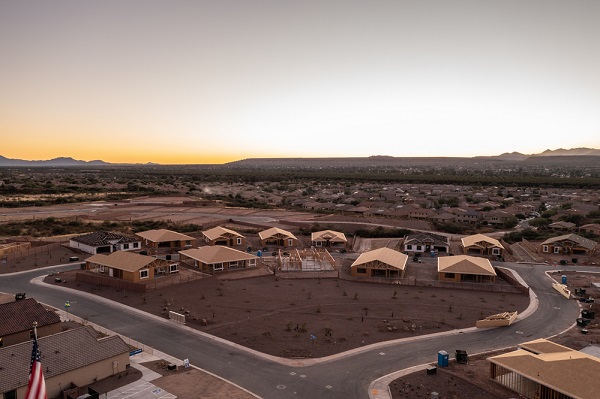Builders Risk: Mortgage Rates, Supply Problems and Labor Shortages

By: Olivia Overman
While many people are finding it difficult to secure a 30-year mortgage interest rate below 7% these days, “the adverse impact rising mortgage rates has had on existing home sales has been positive for new construction,” says Alan Ferguson, president, US Assure. “With 92% of all existing mortgages below 6%, and roughly 62% of mortgages below 4%, many folks are reluctant to sell and face moving into a new mortgage that would now be over 7%.”
“This reluctance has created a supply-side issue for new homes, and builders have begun to step up to meet that need,” he says.
As the demand for new construction increases, the resultant effect is a residential builders risk market that is competitive and profitable. Nevertheless, there are many factors impacting the builders risk market—and independent agents can assist their clients in balancing them.
For commercial construction, the builders risk market is continuing to face challenges in the large, frame construction and renovation arenas, seeing “rate increases as we have for the last three to four years; although those rates are starting to stabilize outside of Tier 1 windstorm counties and high wildfire areas,” says Chelsea Bergen, area assistant vice president, Risk Placement Services (RPS).
Catastrophe rates are still very fluid after Hurricanes Ian and Nicole in 2022 and reinsurance treaty renewals in 2023, according to a report by Amwins.
Additionally, the builders risk market continues to be impacted by inflation issues for both residential and commercial construction. “In January 2020, the median price of a new home in the U.S. was about $335,000, while beginning this year it was approximately 36% higher at $456,000—inflation has certainly had an impact on residential building,” Ferguson says.
“Inflated costs for materials lead to increased construction costs, which will also lead to higher premiums,” Bergen says. “We like to see a sizeable contingency built into the construction budget to account for change orders during construction. Capacity is limited, specifically for frame construction, so we want to structure a program where the carriers on the risk have the capacity to account for those increased costs.”
While supply-chain delays appear to be improving on the residential side, the converse is true for commercial clients, where “supply chain issues have caused problems with projects finishing on time and on budget,” Bergen says. “Nearly all of the builders risk projects we place end up requiring an extension. However, those delays should be accounted for by the general contractor in advance of starting the construction.”
“Looking at multifamily dwellings, there are approximately 994,000 units under construction in the U.S.—that’s the highest count we’ve seen since 1973,” Ferguson says. “The increase probably has more to do with supply-chain issues slowing down those projects—they’re moving into the final phase and have probably grappled through lumber and appliance shortages two-thirds of the way through the project.”
Labor shortages also remain challenging for the construction industry in general. “It’s key for our agents to make sure the building owners and the contractors they’re working with know they are able to hire the right subcontractors or the building owners are able to hire the right general contractor that has the skilled staff to complete the job on time and on budget,” says Ryan Mee, vice president, inland marine underwriting, Liberty Mutual. “It should be something they have the experience in, not a job that’s outside of their scope.”
“On top of those, we have a lot of areas across the country with substantial permit delays and a backlog of permits that are causing projects to be slow to get off the ground,” Mee says. “While it usually doesn’t delay the project throughout, they’re having a more challenging time starting the project because of permit delays.”
As delays and labor shortages persist, some carriers are walking away, with replacement capacity hard to come by, according to the Amwins report.
Further impacting rates is the fact that original bound project rates and deductibles obtained during the softer market cycle are being reconsidered by underwriting panels on extensions as peak exposures are being heavily evaluated, the Amwins report said. In this instance, agents can ensure their clients have adequate coverage by confirming the insurance to value assessment is recalculated as costs increase.
“Prices of material and labor can and are changing quickly, so prior to a general contractor being awarded the bid and prior to construction starting, a recalculation of the budget is necessary to account for those fluctuations of raw materials and labor costs,” Bergen says.
“A healthy contingency needs to be included in the budget to account for cost increases,” she adds. “This will allow all parties to bind a program with limits slightly higher than the anticipated cost, so if and when there are increases, they have already been factored into the program and there is hopefully no need to add additional carriers and capacity midterm.”
Olivia Overman is IA content editor.










